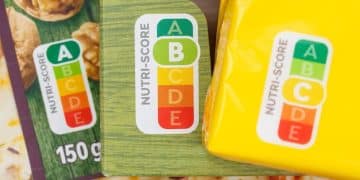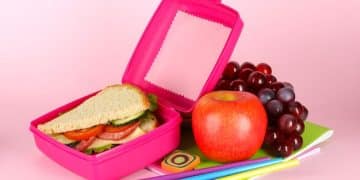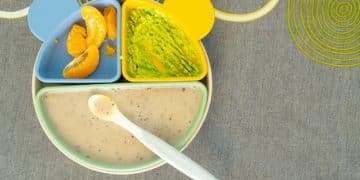Healthy Snacking for Kids: Curbing Sugar Cravings the Right Way
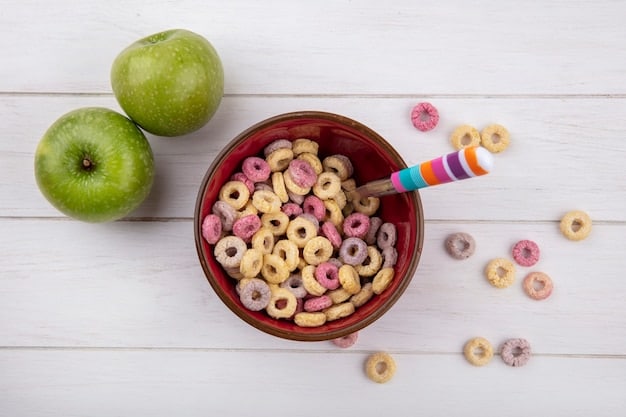
Healthy snacking habits in children are crucial for managing sugar cravings and promoting overall well-being through nutritious choices and mindful eating practices.
Establishing healthy snacking habits early in life is a game-changer when it comes to managing sugar cravings in children and setting the stage for a lifetime of healthier eating.
Why Healthy Snacking Habits Matter for Children
Snacks are a significant part of a child’s daily diet. What they eat between meals can either fuel their bodies with essential nutrients or contribute to unhealthy sugar cravings and poor dietary habits. So, are you ready to improve your kids snacking habits?
But why is it so important to focus on healthy snacking habits in the first place? Let’s delve into the details.
The Impact of Sugar on Children
Excessive sugar intake can lead to a number of problems, from hyperactivity and mood swings to long-term health issues like obesity and type 2 diabetes. By choosing healthier snacks, you can stabilize their energy levels.
Nutrient Density and Overall Health
Healthy snacks offer an opportunity to pack in vital nutrients that children need for growth and development. Think vitamins, minerals, fiber, and healthy fats – all essential for building strong bodies and sharp minds.
- Prioritize whole, unprocessed foods whenever possible.
- Read labels carefully to avoid hidden sugars and unhealthy additives.
- Involve children in snack preparation to encourage healthier choices.
Healthy snacking isn’t just about saying no to sugary treats; it’s about saying yes to nutritious, delicious options that support your child’s health and well-being.
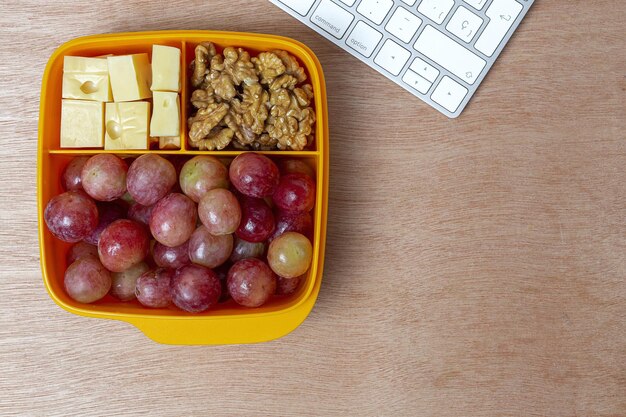
Understanding Sugar Cravings in Children
Before you can effectively curb sugar cravings, it’s important to understand why they happen in the first place. What drives your children to reach for those sugary treats, and how can you address these underlying causes?
Let’s find out the root causes driving your children to junk, to better manage those sugar rushes.
Physiological Factors
Sugar cravings can sometimes be linked to blood sugar imbalances. When blood sugar levels drop, the body craves a quick source of energy, often in the form of sugar.
Psychological and Emotional Factors
Food is often associated with emotions. Children may turn to sugary snacks for comfort or as a reward. Understanding these emotional connections can help you address the underlying causes of cravings.
Environmental Influences
Advertising, peer pressure, and the easy availability of sugary snacks can all contribute to cravings. Be mindful of these external influences and create a supportive environment that promotes healthier choices.
- Ensure regular, balanced meals to stabilize blood sugar levels.
- Offer emotional support and alternative coping strategies.
- Limit exposure to advertising and create a healthy home environment.
By understanding the various factors that contribute to sugar cravings, you can develop a comprehensive approach to help your children make healthier choices.
Strategies to Curb Sugar Cravings
Now that you understand the causes of sugar cravings, let’s explore some effective strategies for curbing them. What practical steps can you take to help your children make healthier snack choices?
Healthy habits can be gradually introduced into the diet.
Offer Nutritious Alternatives
Swap sugary snacks for healthier options that still satisfy your child’s taste buds. Fruits, vegetables with hummus, yogurt, and nuts are all great choices.
Plan Ahead
Keep healthy snacks readily available and easily accessible. When children are hungry, they’re more likely to grab whatever is convenient.
Make it Fun
Present healthy snacks in an appealing way. Cut fruits and vegetables into fun shapes, create colorful snack platters, or let your children help with snack preparation.
- Experiment with new and exciting combinations of healthy foods.
- Keep a variety of healthy snacks on hand to prevent boredom.
- Involve children in the selection and preparation of snacks.
These strategies can make healthy snacking an enjoyable and sustainable part of your child’s life.
Healthy Snack Ideas for Children
Need some inspiration for healthy snack options? Here are a few ideas to get you started.
With a few tweaks, you can get your kids hooked into healthy food.
Fruits and Vegetables
Fresh fruits and vegetables are packed with vitamins, minerals, and fiber. Offer a variety of options to keep things interesting.
Dairy and Protein
Yogurt, cheese, hard-boiled eggs, and nut butters are excellent sources of protein and calcium, which are essential for growing bodies.
Whole Grains
Whole-grain crackers, granola bars, and popcorn provide sustained energy and fiber.
- Apple slices with peanut butter
- Carrot sticks with hummus
- Greek yogurt with berries
With a little creativity, you can create a variety of delicious and nutritious snacks that your children will love.

The Role of Parents and Caregivers
Parents and caregivers play a crucial role in shaping children’s eating habits. From stocking the pantry to modeling healthy choices, your actions can have a significant impact.
Be the role model, your child will follow your steps!
Lead by Example
Children often mimic their parents’ behaviors. Make healthy snacking a part of your own routine to set a positive example.
Create a Supportive Environment
Limit access to unhealthy snacks and create a home environment that promotes healthy choices. Stock the pantry with nutritious options and make them easily accessible.
Educate and Empower
Teach children about the importance of healthy eating and empower them to make informed choices. Explain the benefits of nutritious snacks and the drawbacks of sugary treats.
- Involve children in grocery shopping and meal planning.
- Read labels together and discuss the nutritional content of different foods.
- Offer positive reinforcement and praise for healthy choices.
As role models and educators, you have the power to influence your children’s snacking habits for the better.
Addressing Challenges and Setbacks
It’s not always easy to maintain healthy snacking habits. There will be challenges and setbacks along the way. How can you handle these situations and stay on track?
Don’t worry, setbacks are common. The important thing is keep moving forward.
Dealing with Picky Eaters
Picky eating is common among children. Be patient and persistent. Offer a variety of healthy snacks and encourage them to try new things.
Navigating Social Situations
Parties, playdates, and school events can be challenging. Plan ahead and pack healthy snacks to bring along.
Staying Consistent
Consistency is key. Establish clear guidelines for snacking and stick to them as much as possible.
- Offer new foods alongside familiar favorites.
- Communicate with other parents and caregivers to ensure consistency.
- Don’t give up! It takes time and effort to change eating habits.
By addressing challenges and setbacks with patience and persistence, you can help your children develop lifelong healthy snacking habits.
| Key Point | Brief Description |
|---|---|
| 🍎 Nutritious Alternatives | Offer fruits, veggies, and yogurt instead of sugary snacks. |
| 🗓️ Plan Ahead | Keep healthy snacks readily available and accessible. |
| 🎉 Make it Fun | Cut snacks into fun shapes and create colorful platters. |
| 🧑🤝🧑 Lead by Example | Model healthy snacking habits to set a positive example. |
Frequently Asked Questions (FAQ)
▼
Great healthy snack options include fresh fruits, vegetables with hummus, yogurt, cheese cubes, whole-grain crackers, and small portions of nuts or seeds. These provide essential nutrients, fiber, and protein.
▼
Try cutting fruits and vegetables into fun shapes, creating colorful snack platters, or letting your children help with snack preparation. Offering dips like hummus or yogurt can also encourage them to eat healthier options.
▼
Offer a healthy alternative, such as a piece of fruit or a small serving of yogurt. You can also distract them with an activity or explain why sugary snacks are not the best choice for their health.
▼
Very important! Children often mimic their parents’ behavior, so when adults choose healthy snacks, they not only benefit themselves but also set a positive example for their kids to follow. It reinforces healthy choices.
▼
It’s best to limit or avoid snacks high in added sugars, unhealthy fats, and sodium, such as sugary cereals, candy, chips, and processed foods. These offer little nutritional value and can contribute to unhealthy eating habits.
Conclusion
By understanding the causes of sugar cravings and implementing practical strategies, you can help your children develop healthy snacking habits that last a lifetime. Remember, it’s not about deprivation, but about making informed choices that support their overall well-being and happiness.
